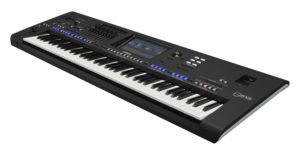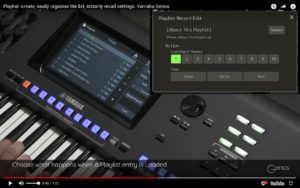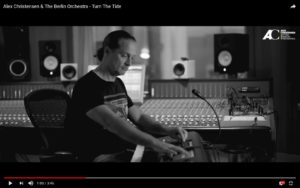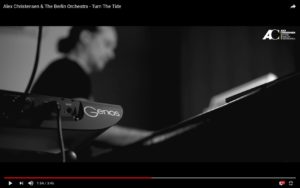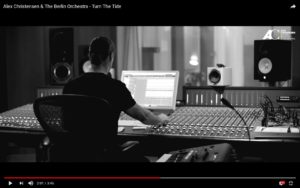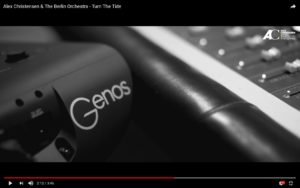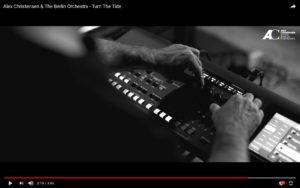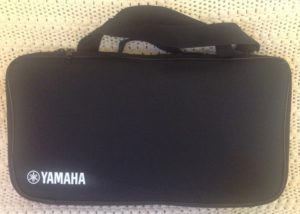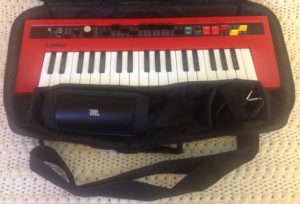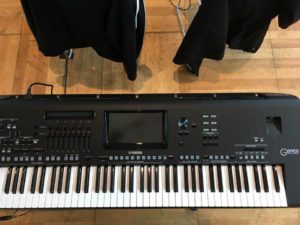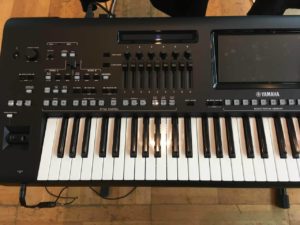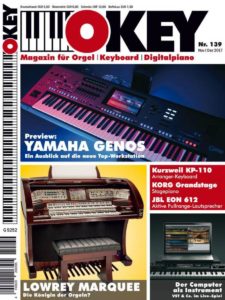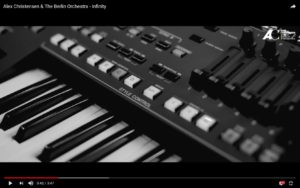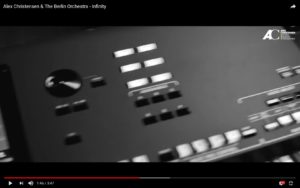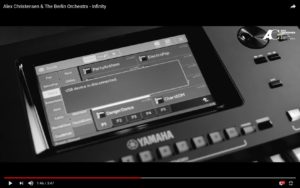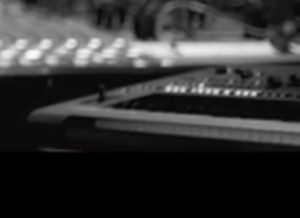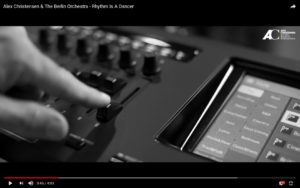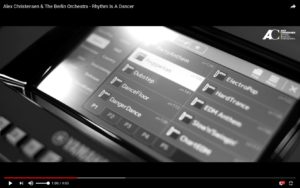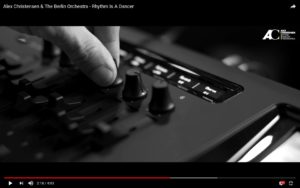So, how do I feel about Genos now that the Genos manuals are rolling out and emotions have cooled down?
The Yamaha Genos™ is a significant update on the Tyros 5. The brand new user interface (UI) should be easy to navigate through the brand-spanking new touch screen. The assignable knobs and sliders are very welcome, and probably give some Montage owners FOMO (fear of missing out). The sound set has gotten the usual and expected boost: CFX piano, C7 piano, electric pianos on par with Montage, new acoustic guitars, and so on.
Scratch the surface of the new UI, however, one finds few feature enhancements. The new Playlist capability replaces the Music Finder Database (MFD). Yamaha are in competition with Korg’s Songbook and only real hands-on experience will determine who has the edge.
The lighter weight is definitely appreciated as well as the modern stage styling. Yamaha have chosen to offer Genos in a single 76-key model. The 76-er weighs less than the previous 61-key Tyros 5 and that’s all to the good.
Before I discuss a few specific points, I want to describe how I feel: methodically enthusiastic. Huh?
When I buy a new keyboard, I think carefully about need — what would improve my experience and skills as a musician and what would improve the experience of those for whom I play. I do not currently perform with my Yamaha PSR-S950 arranger. Gig-wise, I can cover what I need to cover with a sample-playback synthesizer. I need section/solo orchestra strings, woodwinds and horns. I need B-3 organ and pipe organ. The Yamaha MOX6 — my main gig instrument — is sufficient in this regard.
I do play the S950 as a practice instrument. I also have aspirations of performing as a one man band (OMB). I would be very happy to have a single instrument that fulfills gigging, practice and OMB situations.
In terms of sound, I’m ready for a major update. The MOX6 and the S950 sounds are roughly the same vintage as the Motif XS, first released in 2007. That’s ten years. As a car owner, I tend to hold and drive the same car for ten years. Then I realize how far the technology has progressed and update. My attitude is the same for instruments. I prefer to hold and play an instrument for five years or longer, learning it in depth. I make an exception if the front panel buttons are worn and broken. 🙂
At this point, I know for sure that I want a better keyboard action such as the FSX action in Montage and Genos. This is similar to moving from a “student model” sax to a “pro” sax. I think the better action will help me as a player.
If you stuck with me this far, you probably realizing that I’m considering either the Montage or the Genos as my next gig and home ax. Even though I respect the Kronos, its orchestra instruments are not as expressive as Yamaha’s. Roland seems to have given up on orchestral instruments. After a quality/reliability issue with Kurweil, I’m off of them for life.
So, I am methodically enthusiastic about the Genos. It’s Genos vs. Montage; Godzilla vs. Mothra. Is the Genos value proposition sufficiently atractive that I will pay its premium price? That comes down to the playing experience and workflow. To be decided over the coming months.
I’m reluctant to give anyone advice. Every musician must carefully weigh their needs, the Genos value proposition and the Genos price. I will say that the Montage, Kronos, Tyros 5 and PA4x remain very fine, capable instruments. The PSR-S970 is no slouch, either. I tend to skip a generation before updating. Should you? Can’t say.
Drawbar organ
The Genos drawbar organ engine is substantially the same as Tyros 5, and S950, for that matter. The drawbar organ page is a skeuomorphic representation of the drawbars, rotary speed switch, etc. When Yamaha adopted a touch screen, thank heavens they added real sliders for drawbar control. This is doing it right.
I play the bars constantly. When I test drove a CVP-709 touch screen piano, the virtual, on-screen drawbars were impossible to play. Kudos for adding real physical controls to the Genos.
Also, thank you for porting the new Montage rotary speaker effect to the Genos.
Speaking of DSP and control, I have another suggestion for Genos 1.1. Many DSP effect algorithms have a parameter which can be controlled from an assignable controller (e.g., AC1). The Genos is too limited in this regard. Any physical controller — including a foot pedal — should be able to tweak a controllable DSP parameter in real time. Currently, for example, a foot pedal can only control the WAH effect. One should be able to control any DSP algorithm with a controllable parameter.
Ready for the studio?
Quite a few pros immediately noted the lack of balanced outputs and asked “Is Yamaha serious about attracting pros to the Genos?” Another question often raised is, “What happened to PAC?” The S/PDIF digital output is good enough to connect to home audio equipment, but the professional studio (and stage) expects balanced outputs.
Another missing feature is audio over USB and/or DAW integration. Fortunately, these features can be added through a software update; balanced outputs cannot.
Really ready for EDM?
Now, I’m not really an EDM person. I like down-tempo and I’m hoping to compose down-tempo tracks once the snow flies and the weather keeps me in. A few common themes recur in on-line forums.
The Genos adopts arpeggios and arpeggio control features from the PSR-S970. True EDM people are expecting more, however. At the very least, Yamaha need to add user-defined arpeggios, maybe in release 1.1. User-defined arps were a much-requested item for the Montage punch-list; Genos is no different.
Yamaha, if you’re listening, there is an active thread about arpeggios in the Genos section of the PSR Tutorial Forum. Please read through it.
If you want to attract younger composers and players to Genos, Yamaha need to be bolder and faster.
Built-in expansion memory
Yamaha are committed to built-in flash expansion memory which cannot be expanded by the end user. Not to put too fine a point on it, the flash memory expansion modules are dead. If you’re getting rid of your Tyros, Motif, or MOXF, get rid of the modules, too. If you’re looking for a bargain Tyros 5, Motif XF or MOXF, be sure to get flash expansion modules thrown into the deal. (If you’re buying a MOXF, keep an eye on the Yamaha promotions web page.)
As I explained in another post, I believe that the Genos internal file system resides in the same physical memory unit as the user expansion waveform memory. The total capacity of this memory is 64GB and is partitioned into the 58GB internal file system and the 1.8GB voice expansion memory. If 1.8GB is too small, I wonder if Yamaha could be persuaded to repartition the memory and make the voice expansion memory bigger (at the expense of file system size)? This is all speculative, of course.
Audio styles
Audio styles have not disappeared — just deemphasized. Audio styles were not universally popular. So, audio styles have been dropped from initial factory content and will be provided at a later date. Users will be able to load audio styles, if they so desire.
I still believe that Yamaha will introduce full audio styles, that is, styles with melodic parts that follow the current chord type and root. When Yamaha re-launch audio styles, they will be “audio styles done right.” I think they learned a lot from the S950, S770, S970 and Tyros 5 in this regard. Release date? Who knows?
Copyright © 2017 Paul J. Drongowski

